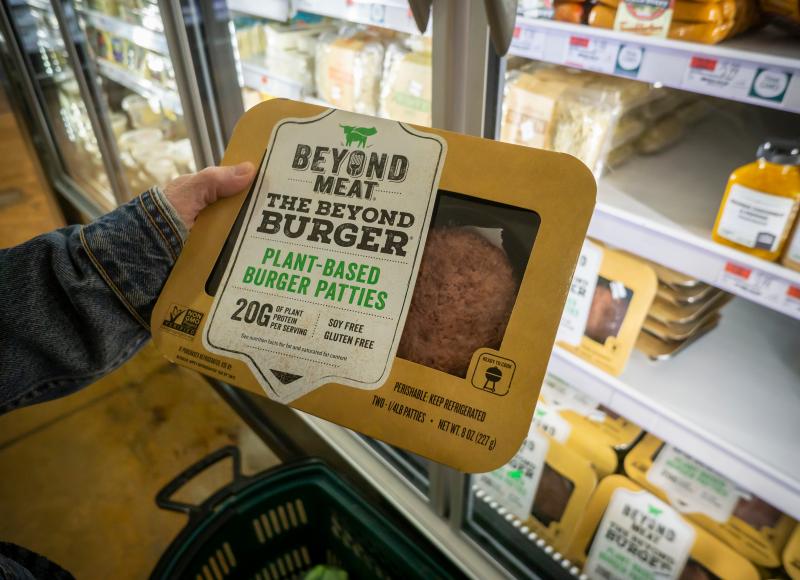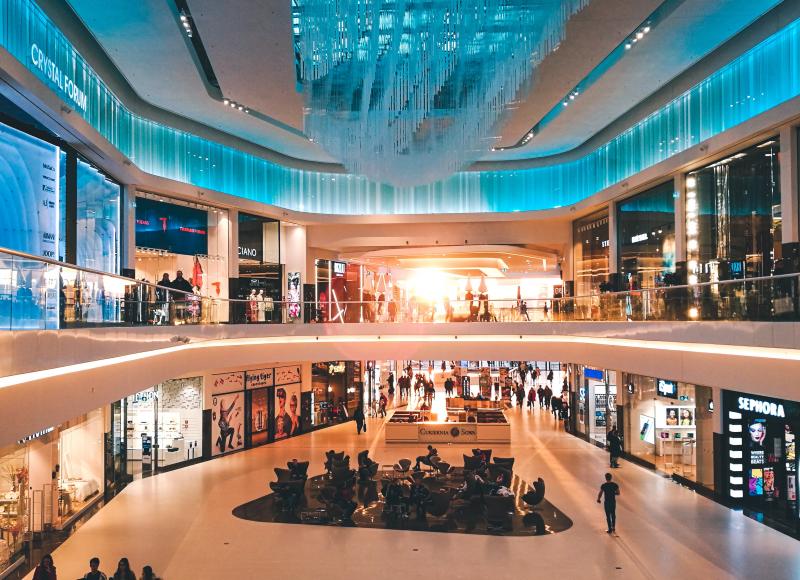Eight Trends in Germany's Highstreets
Eight Trends in Germany's Highstreets
Everyone can see it: the top shopping streets and shopping centres are changing. An interactive tool that we developed on behalf of BMO Real Estate Partners Germany makes future structural changes and opportunities visible for 141 German cities. The report also shows eight trends that will shape our highstreets in the future.
Many new floor space concepts in our city centres were not available before: hip city DIY stores, cosy cafés in fashion stores and state-of-the-art supermarkets. Onliners who are moving into the area, offliners who are digitalising and consolidating. At the same time, we are seeing a progressive mix of uses on the highstreets. Urbanity, liveliness, quality of stay function above all through synergies. In short: Germany's cities are in a constant state of change and with them their highstreets. Key drivers are changing consumer behavior and new urban development guidelines. Where once shopping was the main activity, apartments, restaurants, offices and leisure space are increasingly to be found - the increasing diversification aims to fill the inner cities with life even after closing time.
With the report "What's next, Highstreet? Ein Blick auf Deutschlands Einkaufsstraßen" (What's next, Highstreet? A Look at Germany's Shopping Streets) and the corresponding online tool, the tenant and occupancy structures are shown in relation to the quality of the city and location. Both are intended to provide investors and asset managers with orientation to identify synergies and discrepancies within the highstreets and to explore challenges and opportunities.
The tool, developed on behalf of BMO Real Estate Partners Germany, records the tenant and occupancy structures in the top shopping streets of 141 German cities. It brings together over 150 highstreets, around 150 inner-city shopping centers, more than 6,600 tenants and over 20,700 shops. The tool maps a status quo at the beginning of 2020, i.e. before COVID-19, and for the first time offers an interactive overview of Germany's shopping streets and shows their development potential. In future, the inventory will be updated annually, thus creating the basis for verifying changes at the respective location. It will also show how strongly COVID-19 affects our highstreets and to what extent the pandemic will act as a trend accelerator or brake.
What's in the Highstreet tool? Here is our Making of
In the end it may seem like a simple, playful online tool. But behind it are large amounts of evaluated data, intensive thinking about meaningful clusters, extensive manual research and a not inconsiderable amount of technical effort.
So what exactly is behind it? In order to be able to present the retail stock in the prime locations of German city centres in just one single, illustrative tool, we have examined the highstreet locations of more than 140 cities and systematised them according to sector affiliation and company type. The data was based on bulwiengesa's own real estate database RIWIS, the L3plus tool developed by Lührmann and bulwiengesa (published in September 2020), as well as on the bulwiengesa researchers' analysis of Filialfinder.
All cities were clustered according to location criteria relevant to the retail trade, which were based on the DISco (German Real Estate Score) city scoring tool developed by BayernLB and bulwiengesa. DISco shows current and future strengths/weaknesses profiles of all German real estate markets in the office, residential and retail segments. On the basis of DISco, our project team has created a customer and market-specific derivation especially for BMO.
And specifically? The city of Chemnitz, for example, is among the "Underestimated", Bonn among the usually much larger "Top Performers". The cities examined were classified into five groups:
- Top Performers
- Rising Stars
- The stable ones
- The underestimated
- Little treasures
We have analysed and evaluated the weaknesses, strengths and risks of a location using the variable sets property market, accessibility, population, supply/demand, economy and financial market.
Eight trends for the future of Highstreet
Driven by the contradictory behavior of consumers - on the one hand the digitization of their everyday life and on the other hand the increasing identification with their own environment and region - eight trends are crystallizing that will shape the transformation of the highstreets:
1. Individualization through mechanization
Technological payment options, virtual worlds in the shop windows, displays in the changing rooms that take the customer on a digital journey, provide information on product availability, show possible combinations and present the right individual setting. A showroom within a showroom.
2. Food and drugstore retail increases presence
The food and drugstore retail trade has further expanded its presence on the highstreets. The online presence is also constantly being improved, but the premise is still: stay close to the customer. In order to increasingly establish locations in city centre locations, small-scale city centre concepts are being developed on the one hand, and a special focus is placed on a high quality of stay on the other.
3. "Verticals" are increasingly concentrating on just one highstreet location
Consolidation of space on the highstreets is no longer a rarity. As a result, new usage segments and concepts will frequently be found in the locations available at that time.
4. Increasing interest in smaller spaces
If you want to consolidate space, you need fewer square metres. Those who rely more on Omnichannel may need more storage space, but smaller sales rooms. These restructurings lead to an increased demand for smaller spaces.
5. Increase in the quality of experience in city centres
The "eventisation" of open spaces in the highstreets has received a new impetus in recent years. The aim: to revitalise public spaces and to design places with a high appeal.
6. Professionalisation and increase of the gastronomic offer
The catering trade also profits from the desire for unique shopping experiences and an optimised quality of stay. Diverse concepts are already finding their way into the high streets.
7. Addressing and controlling customers through digital services
Parking guidance systems and WLAN hotspots are one thing and make shopping more pleasant for the customer. The digital networking of local retailers is the other. Joint online platforms create synergies and cover the needs of a wide range of users at a glance.
8. Contract terms become more flexible
The requirements and wishes of traders are, like the trade itself, in a state of flux. The flexibilisation of contract terms is more frequently on the agenda.
Note: Tool and report "What's next, Highstreet? Ein Blick auf Deutschlands Einkaufsstraßen" can be found here (including a Step-By-Step-Guide in English).
Contact: Dr. Joseph Frechen, Head of Retail and Branch Manager Hamburg at bulwiengesa, frechen [at] bulwiengesa.de





